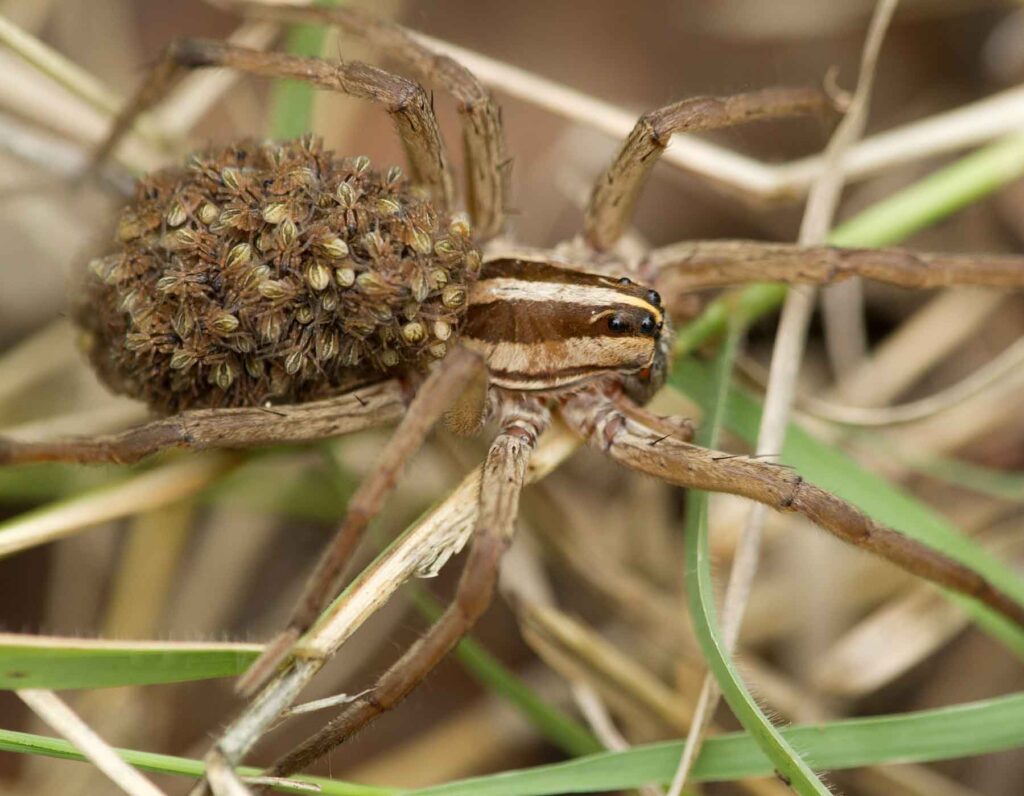Wolf spiders are members of the Lycosidae family and are robust hunters. Their eyesight is excellent, and they hunt alone, not in colonies. They have eight eyes, and are nocturnal, meaning they can hunt during night hours. Their habits are solitary; they don’t spin webs. This means they are not a threat to humans. However, they are dangerous to pets and children. Read on to learn more about wolf spiders.
They’re not poisonous
The common misconception that wolf spiders are poisonous is completely untrue. These spiders do have venom, but the venom is not harmful to humans. This type of venom can kill insects and other small animals, but it won’t harm humans. Although the bite of a wolf spider can be painful, there’s no reason to be afraid of it. This spider is not dangerous, but you should still take precautions, especially if you have allergies.
Although wolf spiders are not toxic to humans, they do have venom that can irritate the skin. These spiders are harmless to dogs and cats, and if you catch one, you should take care of it properly. Place it in a flower pot to preserve it. If you find one in your yard, be sure to keep it out of reach of children and pets. You should keep it safely away from water to avoid attracting other spiders.
They’re nocturnal
Wolf Spiders are large and hairy spiders that can grow up to two inches long. These nocturnal creatures belong to the family Lycosidae. These nocturnal creatures are common throughout the United States and Illinois alone has 47 different species. The colouration of a wolf spider varies depending on its habitat. Typically, wolf spiders are brown, but some species have darker colours.
Female wolf spiders are the primary caregivers for their young. The female wolf spider lays dozens of eggs, whereas males do not usually eat females. The female wolf spider is the primary caretaker of the young and the eggs are usually covered with silk. Baby spiders crawl out of the egg sac and climb on the mother’s abdomen. Once fully mature, they are independent hunters.
Also Read: LadyBugs Interesting facts
They hunt in burrows
Wolf Spiders are a successful species of spider, occupying many habitats worldwide and exhibiting a variety of prey-capturing strategies. They are capable of web-building and burrow-dwelling behaviour, with their burrows varying in size, length, and depth. In males, these burrows are temporary, while in females, they serve as brood care. Burrows of wolf spiders are related to open areas with sparse vegetation.
The burrows of wolf spiders are formed by the spinning of sand on the ground and the settling of mud, dust, and soil. These wolf spiders hunt in burrows and use their keen eyesight and heightened sensitivity to vibrations to detect their prey. They use these methods to avoid predators like lizards, birds, and hunting wasps. These predators can paralyze wolf spiders and drag them back to their burrows, where their eggs hatch.
They have eight eyes
Wolf spiders have eight eyes, arranged in three rows. They have two large eyes in the centre, two medium-sized ones on the sides, and four small eyes on the bottom. These eight eyes provide excellent vision and help them catch their prey. They come in a variety of colours – brown, black, grey, orange, and yellow. The males and females have different-coloured stripes and marks on their bodies.
Although most spiders have eight eyes, there are exceptions. For example, the spiders of the Cybaeidae family have eight eyes while the spiders of the Arctosa family have six. Some cellar spiders also have six eyes. These spiders are unique because their eye arrangement is unusual. They can also be distinguished by the colour of their skin. Some species even have a different pattern of eyes.
They are solitary
The wolf spider is a solitary creature that lives in the wild alone. This means it has no social life and only interacts with other creatures when mating. The female wolf spider carries over 100 eggs in a silk sac under her abdomen. Her abdomen is arched to support the sac. The eggs hatch and the hatchlings crawl up her abdomen for a few days before they disperse. The wolf spider’s life cycle is similar to that of most other spiders. It takes up to nine months for the hatchlings to reach adulthood. The spiders moult several times as they grow and reproduce.
The wolf spider is a great hunter, and it has an extra-sensitive touch and large, sturdy legs. Its long legs allow it to run at speeds up to 2 feet per second. Its legs are paired, and the female builds a burrow beneath boards or rocks. The wolf spider’s eyesight is excellent, so it has an advantage over other types of spiders. Although the wolf spider is not aggressive, it can bite you if it feels threatened. While it may sting, the bite will only be a minor annoyance, and you will rarely need to use antivenom.
They are not a major pest
Although not a major pest, wolf spiders can make themselves quite noticeable in a home. Most often seen outside, these spiders will occasionally enter a home in search of prey. They prefer dark, sheltered areas, but they can also enter a home. These spiders typically live in the basement or garage, but can sometimes venture indoors. These spiders do not cause damage to humans and are good for the ecosystem.
Despite their large size, wolf spiders are not considered a serious pest, but their numbers can be out of control. If you’ve noticed the presence of wolf spiders in your home, contact a professional pest control company like Atpmspest. We have been helping homeowners with spider problems for decades. Call today to learn more about the services we offer and how we can help you. We’ll help you understand the benefits of hiring a professional pest control company.

